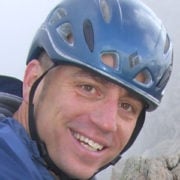In recent years, the number of skiers in the backcountry has risen dramatically. As the number of new people picking up the sport continues to grow, learning avalanche awareness and how to identify and manage risks while backcountry skiing is a topic more important than ever. One of the crucial parts of backcountry skiing is taking a minute to stop and identify the hazards and then having a frank discussion with your touring partners about how to proceed. Do you avoid them? Can you avoid them? Is it just one of those days when it’s safer to go back to the hut and jump into a hot tub?

Whether you’re learning how to start backcountry skiing, or you’ve been laying turns beyond the ropes for a few seasons, knowing how to identify the hazards of the backcountry and safely manage them is essential. The chief among risk managing strategies is avoiding or minimizing your time on avalanche terrain. This is an introduction to the topic, but by no means does it replace formal avalanche education. No matter how experienced you are, I encourage you to keep learning and stay up to date on avalanche safety. Keep reading to get an idea of what you need to keep in mind when considering leaving the groomers behind — from the right avalanche courses to take, to strategies that will keep you as safe as possible while shredding untracked backcountry powder.
Advice from an AMGA/IFMGA Mountain Guide
I grew up in Boulder, Colorado, and today I’m based in Chamonix, France, where I live with my wife and twin boys. As a winter sports hub, here is where you’ll find fantastic routes, such as skiing La Vallée Blanche in Chamonix. I started guiding almost a decade ago, I spend most of my days in the mountains. In the summer, I take my clients rock climbing. Come winter, I guide a little bit of ice, but mostly I pull out the skis and take people ski-touring. When I’m not in the field, I’m a writer with a couple of published guidebooks. My most recent one is The Ski Guide Manual: Advanced Techniques for the Backcountry.
How dangerous is backcountry skiing?
Like any outdoor activity, backcountry skiing can be considered dangerous. There is no such thing as being one hundred percent safe while in the backcountry. You can be more safe or less safe, but any promise of total safety can be misleading, since the activity itself has an inherent risk. As soon as you leave the manicured runs of the ski resorts, the snowpack becomes variable, you’ll find trees sticking out and rocks in your path. Once you’re in the backcountry, you acknowledge that there’s generally some risk, accept it and work towards minimizing your exposure to it. These general strategies can be applied for avoiding any risk.

Total risk avoidance
Total avoidance is the easiest and most effective way to keep any risk at bay. This should be the chief strategy for solo skiers or complete beginners. If it’s really elevated out there and avalanche risk is too high, just don’t ski. Sacrifice a day and stay in bounds or on-piste. Ski runs are controlled and the patrol has spent time ensuring the area is risk-free. It’s not the most enjoyable strategy, as you might be hut-bound for an entire day, but sometimes it’s the smart choice.
Avoidance-light
Avoidance-light is an acceptable compromise — you go backcountry skiing but agree with your partner or guide to steer clear of all avalanche terrain. This strategy calls for knowing how to identify what is and isn’t avalanche terrain. This is the tactic I employ the most. There are many days when a decision to go skiing isn’t as easy as saying ‘yes’ or ‘no’. You might recognize that there is indeed avalanche risk out there, but that it’s low and decide to avoid it where you can. In backcountry skiing there is never an absence of risk, but if you have an idea of how avalanches might behave and where they most likely will occur, you can plan on how to avoid them. How do you identify potential avalanche hazards? Keep reading for the general tell-tale signs.

How to Recognize Avalanche Terrain
When backcountry skiing, your first step should always be checking what the avalanche conditions are like by using the avalanche bulletin or forecast. These tools will help you identify where avalanches might happen and how you can go about avoiding them.
Where to ski
A good rule of thumb to minimize avalanche risk is that ridges are generally safe if you’re on top of them — if there’s no snow above you, you can’t get avalanched. The diversity of backcountry terrain is enormous, so generally you can find some pretty low-angle slopes that aren’t prone to avalanches and still have a great time. This lets you relax, since it shifts what you need to focus on away from avalanches and towards other hazards, like possible tree stumps or rocks, which are a bit more obvious and manageable to deal with.
If you do want to go up some higher mountains and the avalanche risk is low enough, you need to be really careful that you can identify what is and isn’t avalanche terrain. Chief among your concerns with avalanche terrain is how steep the slope is. Most avalanches occur on slopes between 30 and 45 degrees. Thirty degrees is really a magical number for skiing. As long as there isn’t a big slope above you or right next to you and you’re below 30 degrees, you’re doing pretty well.
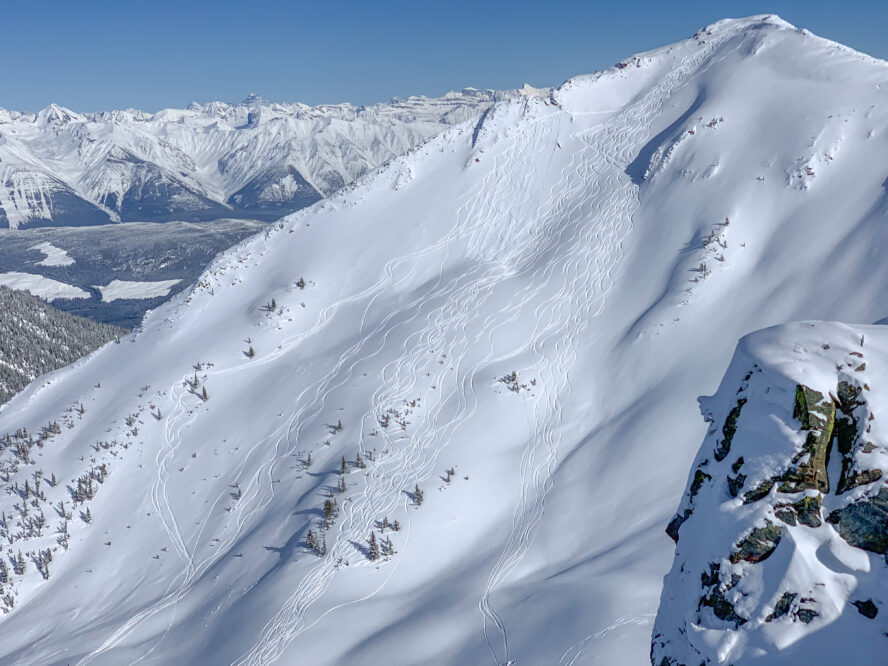
Measuring the steepness of avalanche terrain
A huge part of going into the backcountry is reading up on the terrain while you’re still at home. This way you’re prepared and have an idea of where the avalanche slopes are before you even leave the trailhead. The next step is avoiding them.
If you don’t have much backcountry experience, or have never been to a specific area before, reading the topographic map of that area should be the first step you take. The lines on the map show elevation and the more tighter they’re spaced, the steeper the terrain.
Once you’re in the field, you’ll need to measure slope angles of the slopes you’ll ski, and to do this, you can use a clinometer. A clinometer is a device used for determining the angle of the slope that you hold to the side of your ski pole. Did you know you have a clinometer in your pocket? Most smartphones have a clinometer built in, making them an easy tool to use in the field. They will give you a rough estimate of the slope angle. After you’ve gotten an introduction to some of those tools, you should take an avalanche course and learn how to apply them.

Take an avalanche course
My plea to everyone who is looking to make backcountry skiing their next pastime — take a Level 1 avalanche course! If only one thing resonates with you, let it be the importance of a quality avalanche course. Mountain clubs and guiding services offer them and they are an important step of gaining risk awareness. If it’s possible in your area, hire a ski guide, as they will have lots of experience on uphill and downhill movement that you can implement right away.
Avalanche courses are really fun, designed around a small group of five or six people and led by avid skiers or guides who know what they are doing. Avy courses are a mix of classroom and field work. Once you get in the field, you begin measuring slope angles with the help of an instructor and master other skills needed for dealing with avalanche hazards. As you’re acquiring these skills, make sure you give yourself a chance to practice and spend a lot of time in the field. This helps you work on your emergency strategy should things go awry. I practice basic skills like digging at least once a year, just to stay sharp. Level 1 avalanche courses usually last two to three days. From there, you move onto the terrain and start applying what you’ve learned on your own.
Avalanche bulletins are required reading
The key to being autonomous in the backcountry is knowing how to use the bulletin or the forecast to know what the risk is and where it lies. From there, you need to decide if it’s a risk level you are comfortable with or whether you should avoid it altogether. Most well-populated places have an avalanche center with people dedicated to forecasting avalanche danger — where on the mountain are you going to find it and how elevated the risk level is. The forecasters tend to be avid skiers, but their job is to be out there every day — even when the snow is terrible. When you decide you’re going to stay in the hot tub, they’ll still go out and see what the snow is doing. It’s like having an expert write you a personalised email saying, “Here’s where you can get into trouble and here is where you can find great snow.”
I encourage you to read bulletins while you’re still home, so you have time to get an idea of the risks of your area of choice. Bulletins are part of my morning routine, I jot down the risks the forecasters warn about and carry the notes, so I can’t fool myself into making an unsafe choice while I’m in the field. I check the bulletin even on days I’m not skiing, just to see if there has been a storm, a warm up, and to generally keep up to date with what the snowpack has been doing. These photos and text descriptions will help set you up for making safer decisions.
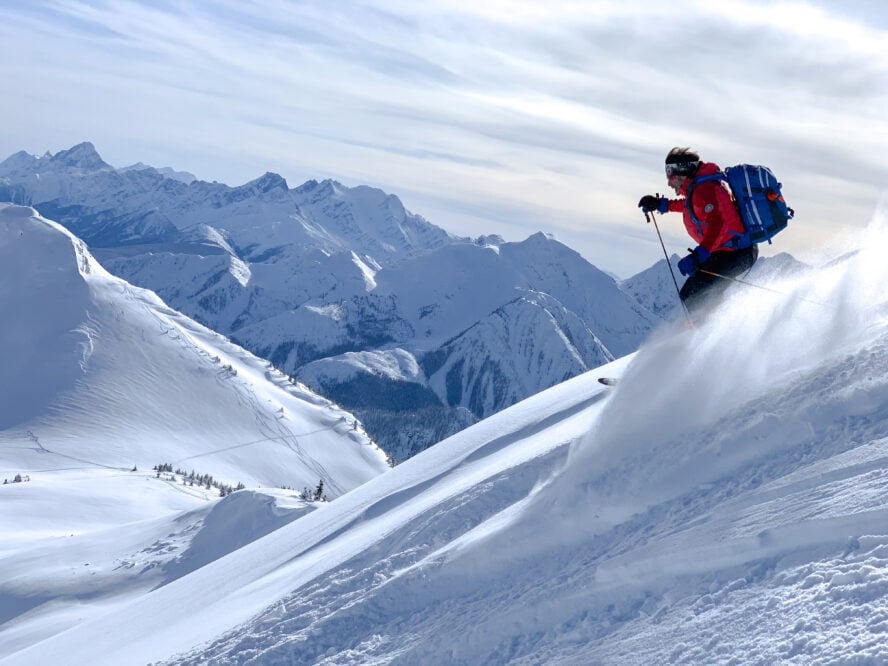
Skiing on avalanched terrain
I will often go skiing and look for slopes that have previously avalanched and gotten rid of some of that unstable snow. If you have any doubt in your mind, skip it. It takes experience to know what to look for. For instance, if the avalanche only clears half of the slope, I would stay away from the snow still sitting there.
Beware the trees
More often than not, the trees are less wind affected and you will rarely have wind-drifted snow. However, some trees can have enough open space in between them that the wind can affect them. For trees to be a safe anchor, they need to be thick enough to make it difficult to ski in there. If you’re going through meadows and having the time of your life, the terrain is probably open and you need to start worrying about the wind. Trees can be a good strategy if the main hazard of the day is wind-drifted snow, but make sure they aren’t in open terrain.
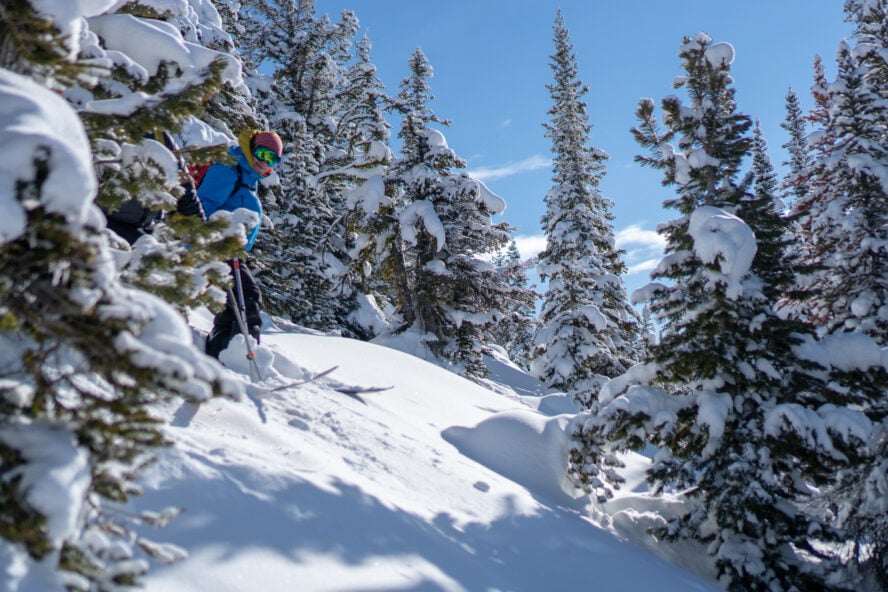
In forested terrain, tree wells are a concern. Even if you’re skiing a meter away, bigger trees tend to have hollow areas around them that you can fall through easily. If your feet are downhill it’s less of a problem, but what often happens is that the collapsing makes people stumble and go head-first into the tree well, thus tangling their head in the branches. If you can keep cool and wiggle yourself out, you’ll be fine, but most people panic and disturb the snow, which then piles up on them.
When skiing in trees, develop a check-in system with your guide or buddy. The way I do it is that I have the first person skiing for a while and holler back every once in a while. After 30 seconds, we switch, the person in the back passes, so everyone can get a turn to carve tracks in untouched powder. That way, we keep an eye on each other. If anything happens, it’s good to carry a six to eight meter cord that you can throw down to your buddy and pull them out.
How to ski in a group
Once you’ve chosen where to ski, you need to choose how to ski. A great idea to ski in any terrain is one by one. That way, if an avalanche occurs, you have the rest of the team to plan and execute the rescue. If you’re on a slope that the forecast warned about, but the avalanche is unlikely to happen again and you like your odds, ski one at a time and watch the person in front. Once they get to the bottom, they have to regroup in a place that’s truly safe. That can be in some dense trees or up on a bump out of the avalanche path.
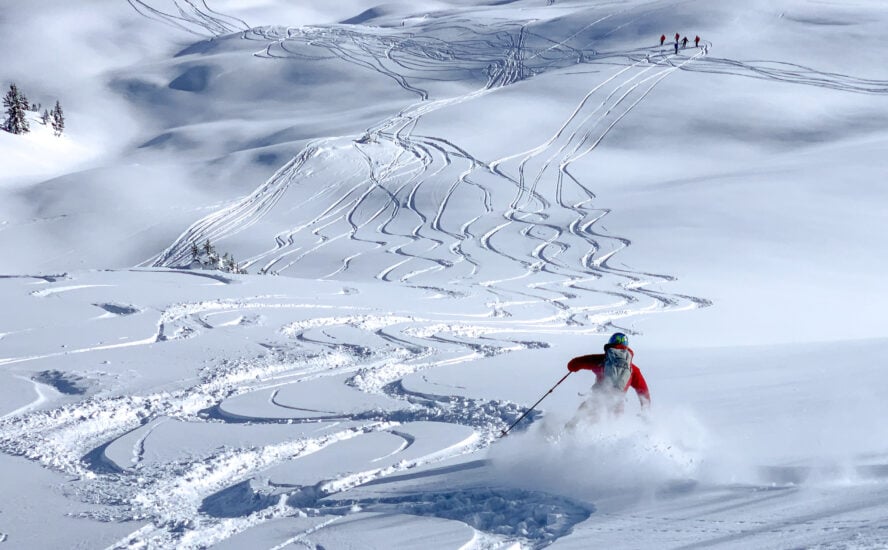
Consider heading out with a guide
Strong intermediates who are confident in their abilities on the groomers can head into the backcountry. You don’t need to be a total pro, but it’s better if you have a couple of seasons skiing on the piste behind you. The snow in the backcountry tends to be less dependable and demands better skiing techniques. That said, for your first season or two, I wouldn’t recommend skiing alone.
The safest way to go about it is hiring a guide. What guides do is have a talk to you about your experience and have a pretty good idea where you should ski before you even hit the slopes. They are going to have a great day of skiing figured out for you, in a way that’s going to be fun and challenging, but most importantly doable and as safe as possible — especially if it’s your first time carving backcountry pow.
Skiing with a guide can be a great way to accrue experience because you’re getting a coach with immense experience. It gives you an opportunity to make choices with a guide standing beside you and guiding you through the process. Once you get it down, you’ll feel a lot safer on your own. Get a group of friends to split the cost and head into unfamiliar backcountry territory with someone who knows it well. It will do you a world of good. They’ll keep an eye out for avalanche risks, plus you get good recommendations for grabbing a bite and beer after a long day of skiing.
To learn more about managing backcountry risk and avalanche awareness, watch this 57hours Adventure Talk:

